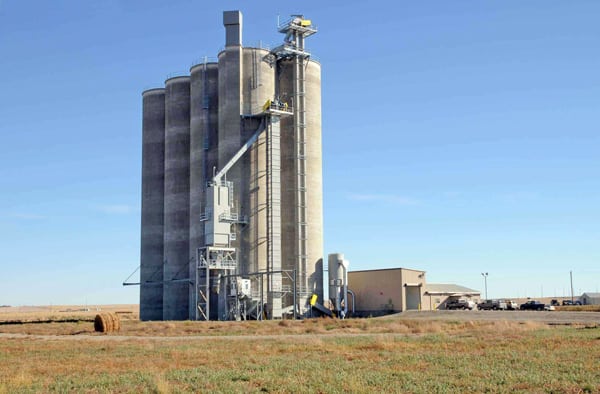NFPA combustible dust standards cover the general requirements for wood, food processing, and combustible metal dusts, but some industries have special needs and risks.
Wood processing and woodworking (NFPA 664) make up a large percentage of combustible dust accidents. The agriculture and food processing standard (NFPA 61) deals with combustible dust incidents in this industry, which also has a high number of accidents.
Combustible metals present a known hazard as well. Besides NFPA 484 for combustible metals, there are also special standards for handling magnesium, lithium, titanium, zirconium, and aluminum. These metals require special handling either because they can be highly reactive, especially in a fire.
NFPA 664: Woodworking and Wood Processing
Working with wood can create anything from large chunks of material to very fine, very flammable particulate. NFPA Standard 664 addresses wood industry fire and explosion hazards. In this case, OSHA is also concerned with woodworking safety, and they offer an interactive online tool to learn more.
A main concern for this standard involves accumulated combustible wood dust. Because sawdust is fine and lightweight, it easily accumulates on flat surfaces. Because the characteristics of wood dust vary so much, this standard discusses how to determine dust combustibility. Factors in this can include moisture content, particle size, and the type of wood.
Another major issue for this standard involves preventing and managing deflagrations. This doesn’t just apply to dust collection. Silos, storage areas, conveyor belts, hammer mills, and other equipment can contain dust and may also contain ignition sources.
Standard 664 also requires a hazard analysis. It refers readers to the combustible dust standard 652 for instructions. NFPA 652 is now the general standard on combustible dust. However, NFPA 664 defines special traits of wood dust that require extra management.
NFPA 61: Agricultural and Food Processing
NFPA 61 addresses the high risks involved in handling agricultural and food processing dust. OSHA recognized the combustible dust hazards of this industry long before its National Emphasis Program on Combustible Dust was established.
 This standard puts the responsibility on the owner or operator of the facility to identify all fire hazards, determine the possible consequences, and take steps to mitigate those hazards. Basically, this means conducting a dust hazard analysis (DHA) as specified in NFPA 652.
This standard puts the responsibility on the owner or operator of the facility to identify all fire hazards, determine the possible consequences, and take steps to mitigate those hazards. Basically, this means conducting a dust hazard analysis (DHA) as specified in NFPA 652.
NFPA 61 also contains instructions for building design and material storage, since grain silos and similar structures are a frequent location for fires. For dust collection, it refers to NFPA 68 and 69, stating that dust collectors must be located outside unless they meet NFPA 68 rules for deflagration venting or unless they meet NFPA rules for an explosion suppression system.
Because many grain and food processing fires occur in transport or storage systems like bucket elevators and conveyor belts, this standard also specifies that these devices need to have monitoring systems to detect possible ignition sources. Overheating bearings are often blamed for igniting grain dust and food processing fires. Other equipment, like dryers, must also have heat sensors to make sure they don’t exceed ignition temperatures.
NFPA 484: Standard for Combustible Metals
Many combustible metals present special challenges for fire and explosion management. This standard deals with combustible metals in general. The newest version of this standard refers heavily to NFPA 652, the combustible dust standard, including the requirements for a dust hazard analysis.
NFPA 484 deals with issues specific to metals, including fire extinguishment with sprinkler systems or chemical extinguishers. While most combustible dust fires can be safely put out with standard sprinkler systems or ABC chemical extinguishers, metal fires work differently. Many metal fires can only be put out with a Class D fire extinguisher. Using other methods could escalate the fire.
This standard also deals with the alkali metals, a special group of metals including lithium, which will immediately burn on contact with water. Magnesium also requires caution since it burns with very intense heat. Similarly, titanium and zirconium have their own standards because they can ignite and burn at an extremely high temperature.
Fire and explosion prevention form a major part of this standard, but for combustible metals, another hazard is how a fire will be extinguished if one starts. First responders put their lives at risk if they approach a fire situation without knowing a combustible metal is burning. NFPA 484 specifies that first responders, as well as everyone inside the facility, understand the risks. In addition, the correct type of fire extinguisher must be available in all areas where a combustible metal fire could occur.
NFPA for Woodworking, Agriculture, and Combustible Metals
This concludes our series summarizing NFPA standards relating to dust collection. While we have not covered every standard for every industry, feel free to contact us for help if you have any questions. Our systems designers always use NFPA best practices when designing and building our dust collection systems. Not sure if there’s an NFPA standard that applies just to your industry? Check out their webpage at https://www.nfpa.org/codes-and-standards/all-codes-and-standards/list-of-codes-and-standards for more information.
NFPA documents often refer to “the authority having jurisdiction”. This person has the authority to decide how some aspects of the standards get enforced. The authority having jurisdiction may be the local building authority, similar local authorities, or even your insurance company. If you are building or adding to a facility, you will probably be in touch with some of these people.
We have extensive experience dealing with wood dust, all types of food and agricultural dust, and metal dust and fumes. Because each type of dust presents its own challenges, we know that no single system will work for every situation.
More Than Wood, Food Processing and Combustible Metal Applications
Whether it’s a BRF baghouse or a CMAXX dust and fume cartridge collector, we have the system to address your needs and meet all your NFPA standards. If you want to find out if your current dust collection system complies with NFPA standards, schedule a ServiceMAXX visit. We can inspect your system, make recommendations, and assess what kind of changes to make.


